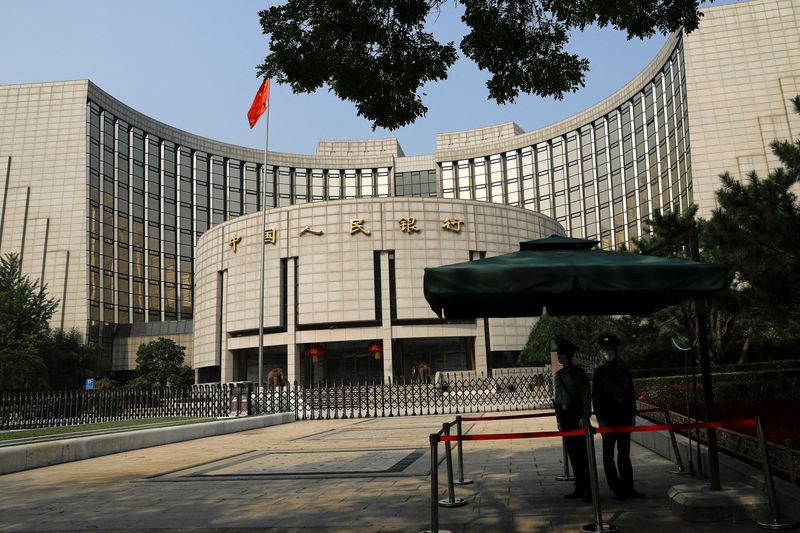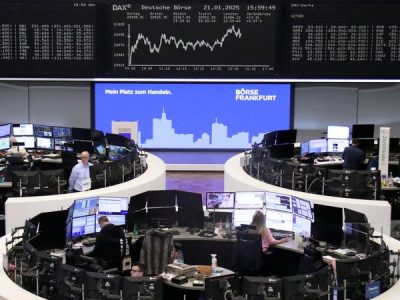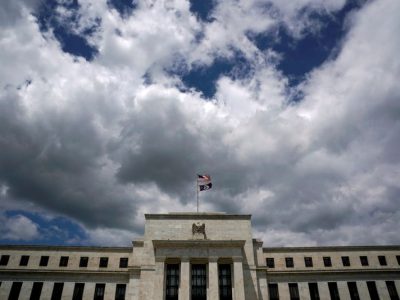
Investing.com — US stock futures point lower, with traders gearing up for a fresh batch of economic readings on Friday. Investors will have the chance to parse through consumer spending and inflation figures as they attempt to assess the state of the US economy with more Federal Reserve interest rate cuts potentially coming later this year.
1. Futures edge lower
US stock futures were lower on Friday as investors awaited the release of a raft of economic data, including new consumer spending figures and the Federal Reserve’s preferred gauge of inflation.
By 03:42 ET (07:42 GMT), the Dow futures contract had slipped by 27 points or 0.1%, S&P 500 futures had shed 9 points or 0.2%, and Nasdaq 100 futures had edged down by 73 points or 0.4%.
The benchmark S&P 500 posted its third record close this week on Thursday, adding 23 points or 0.4%.
Underpinning the increase were figures showing that weekly jobless claims dropped by more than expected, while a final reading of US gross domestic product confirmed that the world’s largest economy expanded by 3% in the second quarter.
The numbers helped to boost hopes that the economy and labor market were on solid footing as the Fed signals its intent to move ahead with a policy easing cycle following an outsized interest rate cut last week.
2. Consumer spending, PCE data ahead
Investors will likely be keeping close tabs on fresh personal spending and inflation data, which could provide a glimpse into the health of the US economy as the Fed approaches more expected rate reductions later this year.
Personal spending, which accounts for more than two-thirds of economic activity, is tipped to have grown by 0.3% in August, slowing from 0.5% in the prior month.
Meanwhile, economists expect the personal consumption expenditures (PCE) price index, which is used by Fed officials as a tracker of inflation, to rise by 0.2% on a monthly basis in August, matching July’s pace. Year-on-year, the reading is seen cooling to 2.3% from 2.5%.
When stripping out volatile items like food and fuel, the PCE price index is projected to remain in line with July’s month-on-month rate of 0.2% and speed up slightly to 2.7% from 2.6% on an annualized basis.
3. Intel, US government to finalize $8.5 billion chip funding deal by year-end – FT
Intel (NASDAQ:INTC) and the US government are likely to finalize a deal to provide $8.5 billion in funding to the chipmaking giant by the end of the year, according to the Financial Times.
Citing people familiar with the discussions, the FT said talks were in an advanced stage, although it was not guaranteed that an agreement will be finalized by the end of 2024.
Any potential takeover of all or parts or Intel could disrupt the negotiations, the FT said.
Intel, which is pursuing a slew of cost-cutting measures aimed at bolstering its sputtering business, has reportedly attracted attention as a possible acquisition target, with rival Qualcomm (NASDAQ:QCOM) said to be eyeing a stake in the company.
4. Costco revenue disappoints
Costco (NASDAQ:COST) reported fiscal fourth-quarter revenue that fell short of analyst estimates, as a dip in spending on big-ticket items and lower gasoline prices weighed on the membership-only warehouse chain.
Shares in the company dipped in extended hours trading following the report.
Speaking to analysts following the results, chief financial officer Gary Millerchip noted that there have been “signs that the consumer is being very choiceful in how they’re spending their dollars,” adding that shoppers are increasingly on the lookout for bargains on items like televisions and home appliances.
Prices for gas also climbed 5.4% during the reporting period ending on Sept. 1, a slower rate than the 6.6% uptick in the prior quarter.
Revenue rose by almost 1% to $79.69 billion, below Wall Street estimates of $79.93 billion, although net income of $5.29 per share topped expectations.
5. Oil dips
Oil prices dipped on Friday and remained on track to post a weekly decline, as traders assessed the prospect of increased output from Libya and the OPEC+ oil group.
As of 03:43 ET, Brent crude futures had slipped 0.2% to $70.94 per barrel, while US West Texas Intermediate crude futures had fallen by 0.1% to $67.67 a barrel.
In Libya, competing factions staking claims to control the country’s central bank agreed on Thursday to end the dispute, which had crimped domestic oil production and exports. Analysts cited by Reuters suggested that over 500,000 barrels per day (bpd) of Libyan supply could return to markets.
Elsewhere, the Organization of the Petroleum Exporting Countries and its allies, known as OPEC+, are planning to reverse 180,000 bpd of deep ongoing output cuts in December.
Investors are weighing the outlook for a possible uptick in supply with a massive stimulus package out of China earlier this week. Analysts have flagged that it remains uncertain if the measures will boost activity in the world’s top oil importer.












